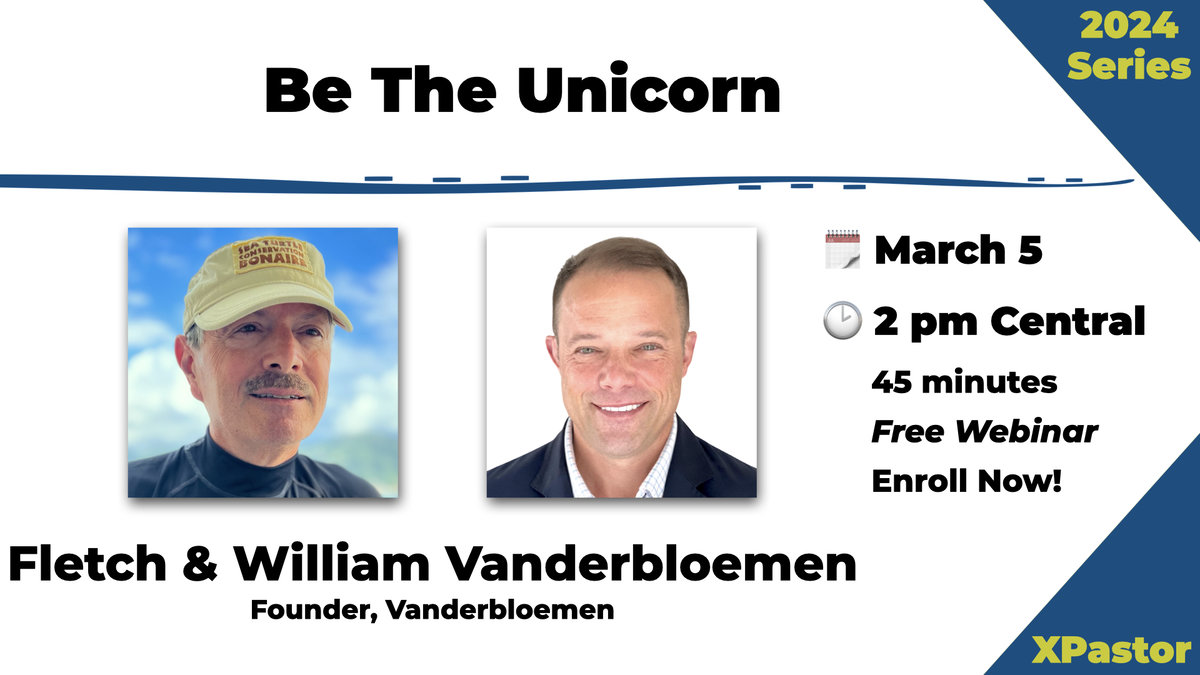Volunteers needed, Men’s Breakfast, retreat, trip, work day, financial report, etc. It is the stuff of church life. Often ministries will advertise their programs as just another thing on the calendar. Other ministries will have niche ministries that advertise for their niche interests within a niche purpose but not as part of the church’s overarching, global direction. Because of my convictions contained herein, I have to say that just doing church stuff or working within fragmented ministries is not effective to get God’s work done or to inspire God’s people. The better and best is to understand that living on the Structure level (people acting within ministries) without continual connection to the Superstructure level (global reason for being) is merely conducting programs for the sake of programs. With proper attention, you can inspire your congregation to see the small and large individual contributions they make as related to a sense of destiny—a sense of contributing to changing the world by being part of something bigger than any one person or group.
Leaders know that planning and acting for effectiveness is hard work. Even if a team can avoid the rhetoric pitfalls of being unclear or of saying too much, the real work begins with translating words into actions. Even harder than that is continuing to stick with the plans for the long haul. Finally, teams also have the challenge of getting followers to catch onto the plans and align their values with those of the organization. While there isn’t enough space to address each of these planning challenges comprehensively, I can introduce you to a helpful model for sorting out and then putting activities within your church in a healthy context.
Having a big picture Superstructure, a Structure of people doing activities, and repeatable systems and protocol of Infrastructure is far from revolutionary. The three in isolation can make sense and be relatively easy to manage. The truly revolutionary undertaking faced by any church is creating a logical flow and relationship between the three. Each of the three structures benefit, and are benefitted from the other two. Conversely, the three are weakened or even stifled when leaders do not aggressively and repeatedly connect them.
There is some organizational philosophy here so let me give three central concepts that can serve as a map through the following pages. First, Superstructure is the destination or destiny of the organization. Second, leaders must be careful that Infrastructure and Structure details and programs do not replace the passion and dreams of Superstructure. Third, leaders must regularly connect those details of church life with the reason for being of Superstructure, both by informing and inspiring.
Allow me to first define the three structures and then I will pull out a number of helpful principles. I will give some other metaphors and examples of the three structures further on, but right now I will use the metaphor of a ship. (Please excuse the starkness of the picture but I am joyfully graphically challenged!—see PDF at end of article for graphics)
I. Definitions
A. Superstructure—The Ship’s Flag
A ship’s flag is a piece of cloth with a lot of meaning that is connected to a society and its values. A nation’s flag, a skull and crossbones, and a red cross all have significance. A nation’s flag says that the ship is out doing the business of that nation, whether it is transportation or war. A pirate flag and a Red Cross flag tell everyone that the ship itself and the people on that ship are operating for a specific purpose.
- Superstructure answers the questions of “Why are we doing it?” and/or “Where are we going?” It states the organization’s reason(s) for being.
- It is the values and desired future of the organization.
- It gives significance to the elements of the lower levels. It calls us out of rote movement and mundane lives. It is a source of evaluating the effectiveness of what we are doing.
Common names and elements: Mission, vision, credo, values, goals, objectives, macro, global, big picture, aerial view, marching orders.
B. Structure—The Ship’s Deck
- Structure answers the questions of “What are we doing?” and “Who is doing it?”
- It is the tangible actions “on deck” and the people who do those actions.
- It gives substance to the dreams of Superstructure.
Common names and elements: Programs, people, ministries, initiatives, activities, rubber meets the road, brass tacks, assignments, responsibilities.
C. Infrastructure—The Ship’s Engine Room
- It answers the question of “How do things get done?” and “When do they get done?”
- It is the repeatable and predictable processes, protocol and systems that keep things going and running smoothly. It is the “hard” detail things that allow you to do “soft” ministry things with needed resources and regularity.
- It gives support to Structure.
Common names and elements: Policy, protocol, channels, timeline, schedule, facilities, finances, procedures, operations, administration, accountability, supervision, systems, communications, alignment.
II. Other Examples
Civilizations
- Superstructure—Constitution, Manifesto, etc.
- Structure—Citizens and their Roles
- Infrastructure—Government Structure, Transportation, Utilities, Communications
The Early Church
- Superstructure—The Great Commission
- Structure—Peter and Paul and thousands of believers spread the Gospel
- Infrastructure—Roads, common Greek language, common Greek writing of the Septuagint, much of which was developed during the “dark,” 400-year inter-testamental period
III. Insights
Effective Organizations:
- Have strength on all three structure levels.
- Have one flag versus multiple, divided and competing flags.
- Identify and repeat common Superstructure.
Effective Leaders:
- Continue to proactively connect Structure people and activities to Superstructure at every opportunity, in big and small ways.
In John 15:15, Jesus said that His followers are friends who know the Father’s business. My interpretation of it is that slaves simply perform functions because they are told to. Friends do the work with an understanding of the big picture reasons. Church leaders must do the same by connecting the work of the church with the purpose of the church.
We assume that people make the connection between what the organization is doing and the organization’s purpose when they often do not. As churches grow in size, the game changes. What works for a church of 100 is much different than that of a church of 2,000. Lines of accountability, roles, expectations, etc. all change as increased size equals increased complexity.
Moving a church of 100 toward a common objective is (usually) much easier. There is usually the pastor who is very close in proximity to the congregation. He is very accessible. He preaches one to two times a week, leads prayer meeting, attends many or all leadership meetings, plays softball at the church picnic, and comes over for dinner. The pastor dedicates, baptizes, marries, counsels, visits, and buries each congregant. There is direct communication, direct access, direct modeling, and direct absorption of his (hopefully noble) values. The values might not even be formally stated but they are still directly “caught” by the congregation.
It is not so at a large church. The congregation is largely physically distant from the pastor. The Senior Pastor is a specialist as are the rest of the pastoral and administrative staff. The congregation is sectioned off by interests, lifestages, facility locations, campuses, etc. Figuratively and sometimes literally speaking, many people are mentally and physically in the twenty-seventh row and we have to broadcast what we want them to get. The bottom line is that communication has to change in that we have to be utterly intentional, clear and repetitive.
There is an information and inspiration component to connecting Infrastructure and Structure with Superstructure. The information component is more static and matter-of-fact than inspiration. In conveying information, leaders usually communicate the information connection verbally or in writing by making an association between a Superstructure value and the Structure program or story. So my church, Cypress Bible Church, will list related ministries under the Celebrate God, Build Bridges and Connect Together section in our worship folder or website. In announcements, we make connection between what we are highlighting and the threefold Superstructure. Note that connecting to your church’s logo or slogan doesn’t have enough meat on it to have impact. I suggest that you go a level deeper into the breakout of values or the desired future to connect more specifically.
Inspiration is impacting the congregation on a different plain. We must repeat values, tell stories, and paint pictures of what the desired future looks, feels, smells, and sounds like. Whereas information really affects the eyes, ears and the brain, inspiration goes after the imagination, emotions and hair on the back of the neck. It is communicated by body language and voice inflections since passion and energy do matter here.
Switching to the metaphor of mountain climbing, we are painting pictures of the mountain top. People aren’t inspired as they should be when we tell them about climbing, tents, ropes, and protective clothing. Their ordinary lives are filled with activities, supplies and details. Yes, there is a joy in the journey but we need to inflame their hearts with a view from the mountain top. Leaders need to tell the congregation, “These are the views, fresh air, feelings, etc. of the mountain top. I’ve been there or I just know it is there.”
Too often we stay at the Infrastructure and Structure levels of details without regular mention of the dreams of the Superstructure. The words impact, Kingdom, serve, etc. are certainly biblical and noble expressions. However, we have to be careful that they don’t become churchy phrases that replace passion. Superstructure is a statement or series of statements that can be as mundane as any detail unless we breathe the beauty of the mountain top into it. So, if one of your Superstructure values is outreach, the communication has to go beyond a Fall Festival event, volunteers needed and evangelism training. That is the people and programs of Structure and is a replacement for Superstructure. They may have become your highest level but it is falling short. Rather, we need to paint the mountain top pictures of husbands falling back in love with their wives, one student changing an entire high school, and the church hallways being filled with new faces of unpolished people and families. I see ethnic groups accepted and loved, nose rings, the smell of cigarette smoke on clothes, a story of an inept evangelist taking first steps with a fellow construction worker, addictions healed, the lonely finding a family, tearful prayers of thankfulness … somebody stop me! Can you see the view from the mountain top? Can you taste it? Are you willing to give up personal comfort to get it? Do you want it or are you that happy living life and collecting a paycheck?
What does a wonderful life of worship look like? As you view connecting with other believers, what mountain top laughter, encouragement, and tears can you help others see? It has to go beyond talk of zip code groupings and database.
From church to church, an Executive Pastor’s job description will range in responsibility and jurisdiction from administration to heavy involvement in leading and guiding the church at large. Wherever you land, you have to communicate the mountain top, Superstructure view wherever you can. You also have to influence all leaders, including the Senior, Lead or Teaching Pastor, to regularly paint mountain top pictures for large and small initiatives.
Don’t allow the lower 2 levels to become the Superstructure
Mountain climbing is not the mountain top. It is an activity to get to the mountain top. Preparation, supplies, base camp, and communications are not hiking nor are they the mountain top. They are an Infrastructure support system. Be careful to make that distinction. Methodology is methodology, programs are programs, and church stuff is church stuff. As humans, we have the tendency to get out of balance in our views and practices and balancing the three structures is no exception. The three structures in isolation are seen below:
Superstructure in Isolation = Lofty Dreams
Inflammatory statements and “coulda, woulda, shoulda” are easy. They can be a dime a dozen in that there is no shortage of people who believe they know the secret to the church’s success. In addition, few churches struggle with crafting some sort of a vision statement. However, there are a myriad of threats to realizing a vision when:
- The vision itself lacks the “bite” to drive a ministry. The vision then becomes a platitude that is placed on a church’s website and dusted off for the state of the church address.
- Leaders cannot translate Superstructure into meaningful and purposeful people and actions of Structure.
- Leaders lack the maturity and tenacity to stick with a Superstructure.
Structure in Isolation = Programs for Programs’ Sake
One of the differences between humans and the animal world is that humans not only have thinking processes but they can also step back and think about how they are thinking. Elephants throw dust on themselves and cheetahs chase gazelles because that is what they do by nature. The challenge is that churches are pretty good at doing noble church stuff without thinking about why since:
- It’s what they’ve always done. In a sense, man-made program or methodology gets raised up to near scriptural status.
- Leaders are unwilling to pay the political cost to change it.
Continually (as in daily and moment by moment) keeping the Superstructure in play gives meaning to Structure by laying out a destiny or reason for being. In addition, it is also a catalyst for thinking about how we are thinking in gauging the effectiveness of our Structure.
Infrastructure in Isolation = Cold Calculations
Again, we are called to proactively seek balance and also proactively avoid the pitfalls of imbalance. Within Infrastructure itself we have to balance being presumptuous and poor stewards with taking God-sized risks.
- Infrastructure people, maybe even a wide segment of the congregation, can swing to the imbalance of solely keeping budget in the black and protecting facilities.
- Ministry can become bottom line business calculations without the warmth of lovingly guiding sheep and bandaging wounds.
Working it Out
Below are action points to call your church out of a program mentality by continually connecting church details with Superstructure values and desired future.
I. Establish or Reestablish Your Superstructure
So you are an Executive Pastor, Senior Pastor, or church leader. In the context of this article, you must be a catalyst to identify and establish the Superstructure or ship’s flag. The most common term is “Vision.” “Mission” is God’s general marching orders for the Universal Church, usually revolving around the Great Commission and Great Commandment. Your vision is your church’s distinct focus, DNA, values, personality, etc.
If you have an established Superstructure, you may need to dust it off and raise it back up the flagpole. A new Superstructure will not do the hard work for you. At times you may need to create a new Superstructure or tweak the present one. The goal is not to find “that perfect formula.” The perfect formula is more about sweat than wordsmithing. Vision planning is about encapsulating the dreams and strengths of a church into a concise, focused, understandable, and compelling statement or series of statements. The litmus test of an effective vision is if it can continually be looked to and aligned under rather than be put in a glass case.
It is my conviction that long plans with too many headings, or too many points stacked under headings, have a very good chance of sitting in the glass case. People can’t get their arms around a myriad of details and sub-points and, therefore, the plan doesn’t inspire anyone. The Superstructure plan fails in that instead of being a reference point to catalyze new thinking and new practices, a church goes back to what it knows. Make it concise, make it inspirational and then free people to organically develop their ministries around it within a supportive system of accountability.
II. Connect Your Structure to Your Superstructure
Pastor or leader, you now need to point to the flag and direct people to move under it. This is where the real work begins since it is far from a once-and-done type of undertaking. Going back to the ship analogy, the pomp and circumstance of a ship launch with the band playing, confetti, and breaking of a champagne bottle will get you about fifty yards into the harbor.
Now there is a three thousand mile journey ahead. It involves scores of interactions, meetings, and communications to get the people and activities working together so that the sum of everything continues to move toward fulfilling the purpose and/or reaching the destination. You will pull down competing flags, filter out unfocused efforts and redirect people who are wandering. It is a mixture of big motions and sweating the small stuff. If the Superstructure values and destination are of high value and are urgent, there is no room for wasted energy and resources.
I find that the major problem is not in finding the right vision but in doing something to act on it. Work the plan with maturity and tenacity. Someone might not need the latest, greatest cardio machine, they simply need to regularly use the old one they have. Children might need their parents to grab an old deck of Uno cards and spend consistent time with them more than they need a new toy.
Instead of reading another book, bringing in a trainer, or going to yet another conference, a church staff might need to just sit down together with some coffee and a flip chart and work out how they can move together under the Superstructure they already have. Some church leaders need to grow up. You need to stop looking for that latest gadget that will propel your church to effectiveness. Instead, put on your “big boy pants” and develop the maturity and tenacity it takes to keep doing something when it becomes hard work.
The actions on deck are only half of the picture. Even focused and committed people are affected by their frame of mind. This is where you, as a leader, can literally and honestly call people to a sense of purpose and destiny. You can say to someone, “All of us together can do far more than any one of us could ever do. You might be content or discontent with your life but your contribution is significant. You have a wonderful purpose. This is how we desire to change the world for Jesus Christ and this is how you are helping us to get there. In your own way you are changing the world for Jesus Christ. If you weren’t doing what you’re doing, our ministry cannot be as effective. Thank you for your commitment to Jesus.” Some people will naturally connect their efforts with the destiny of the organization but many more will not.
Make the conscious and ongoing effort to make the connection for and with people and it will pay off in optimism and momentum.
These are weighty words and can easily be fluff or hype. However, if your Superstructure is risky and of faith where you are saying, “For this to happen, God has to show up big time,” it is honest encouragement. Risk is dangerous but risk is also invigorating. Deep down, I believe many people desire to live a life of risk and reckless abandon. Repeat the God-sized vision and people’s connection to the vision often. Hold your leaders accountable to regularly do the same. Action on deck can easily slide into just doing stuff so you must go after it hard. Here are a few examples of how I could proactively encourage workers by connecting what they are doing (Structure) with my own church’s Superstructure.
Over the past eight months we have undergone a massive overhaul of our Superstructure, as well as the Structure of the people and actions underneath it. We have a simplified and focused Superstructure which is an acronym of our church’s initials—C.B.C.
Celebrate God with our whole lives.
The flagship for this is our Sunday morning campus-wide worship experience.
Build Bridges to reach local and global communities.
The flagships for this are influence through friendships and short-term ministry trips.
Connect Together in life-shaping relationships.
The flagship for this is small groups.
(By the way that is all there is to our Vision Statement. The rest is empowerment and accountability. It is simple, focused, repeatable, and gives form while letting people fully engage their brains.)
Example #1: Mark and Marilyn in the toddler nursery
I had lunch with Mark and Marilyn the other week. During the course of our conversation, they talked about their enjoyment of working with toddlers on Sunday mornings. The gist of a story they told me was that a rough-looking individual handed his child to them and they told him that the little life would be well taken care of. They knew that they were freeing the man up to go to the Worship Life Center to experience our worship service and learn. While leaders often have to help make the connection, they made it on their own. If you reduced it to an equation it would go something like the following:
- Mission: The church is called by God to love Him as well as spread His fame by building believers and reaching the lost.
- Superstructure: Our church’s focused priorities for fulfilling God’s Mission are Celebrating God, Building Bridges, and Connecting Together
- Structure: We, Mark and Marilyn are working in the toddler nursery and contributing to Celebrating God with our work in the toddler nursery.
- We, Mark and Marilyn are part of an amazing dream that is bigger than us!
Example #2: John is cleaning debris out of a hurricane damaged house in Galveston, Texas
- Mission: The church is called by God to love Him as well as spread His fame by building believers and reaching the lost.
- Superstructure: Our church’s focused priorities for fulfilling God’s Mission are Celebrating God, Building Bridges, and Connecting Together.
- Structure: As you are tearing out moldy wood from a basement, you are contributing to Building Bridges.
- John, you are making a contribution that is helping us reach the world!
It might sound a bit hokey but if you have stopped dreaming or haven’t had your hair stand on end in the last couple of weeks, you had better check your church’s direction or your pulse.
How is it that we are called by God to the greatest mission ever known to man and yet we talk about it with the same passion as getting our tires rotated? You have to get it and then you have to help others get it.
Discussion Questions
Coming back to a central point once again, leaders must proactively connect their church’s people and programs of Structure with the dreams, God-sized purpose and destiny of the Superstructure. Consider the following questions alone or with a team:
- Are your executive level leaders able to articulate a compelling Superstructure vision for your church at large?
- Can your executive level leaders map out how Superstructure dreams are realized through Structure activities in your church?
- Does your Superstructure permeate your ministries where the efforts of your staff are centered on living into it with their unique ministry area contributions?
- Does your Superstructure come into play daily in decisions and interactions or, in reality, is your thinking guided by other means?
- Does the advertising in your website and worship folder purposefully connect programs with Superstructure?
View the graphics in the original PDFs: Organizational Structures, Part 1 & Organizational Structures, Part 2











